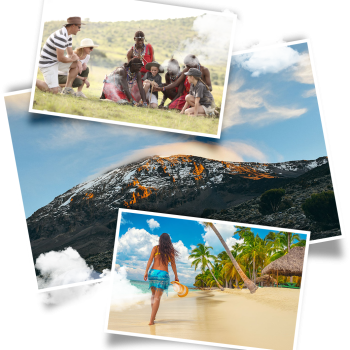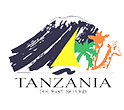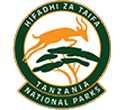CLIMBING KILIMANJARO
LEMOSHO
Kilimanjaro Lemosho Route Overview
This route allows for 8 days of acclimatization and has a decent balance between the heights of the camp sites, making it a little more laid back. With its traverses and traveling through woodlands, the scenery is particularly lovely. Success rates for Uhuru Peak and Stella Point are 88% and 94%, respectively.
Included & Excluded
- Transport in private vehicle
- Accomodation & Meals
- All Related Tour Fees
- Enough Drinking Water
- Government Taxes and levy
- Ground Handling Assistance
- International Flights
- Visa and Travel insurance
- Visa and Travel insurance
- Tips for Guides and Porters
- Personal expenses
Day 1
After completing the required registration procedures at the entrance to Londorossi National Park, we proceed to the Lemosho roadhead by driving through a variety of countryside with unobstructed views of the plains. The final stretch of the road is of poor condition and challenging to drive after rain, so the journey there should be viewed as an adventure in and of itself. Occasionally, we begin walking a few kilometers below the roadhead. At the beginning of the road, we frequently eat lunch before beginning to walk. It’s a simple day of hiking along a narrow path through a gorgeous, thick forest. We camp at Lemosho Big Tree Camp (2,650 meters), which requires a 2- to 3-hour trek.
Day 2
We quickly leave the forest behind and move onto the area of enormous heather-covered moorland. To get to the Shira Plateau’s rim, the trail steadily ascends while offering expansive vistas. Particularly if afternoon mists roll in, there is a real sense of remoteness. At “Shira One,” we set up tent in the plateau’s middle (3,550 m). [6-7 hours on foot]
Day 3
An easy day to aid in acclimatization and to explore the Shira Plateau’s volcanic rock formations. Before arriving at the following camp at Shira Hut, we hike to the top of Shira Cathedral (3,840 m). Near the ragged rim of Shira Plateau and the glaciated dome of Kibo, this campground offers breathtaking views. The views of Mt. Meru floating in the clouds from here are just breathtaking. [4-5 hours on foot]
Day 4
Walking across lava slopes beneath the glaciers of the Western Breach, leaving the moorland plateau behind, is part of a morning of gradual rise and panoramic vistas. We descend to the bottom of the Great Barranco valley (3,900 m), protected by high cliffs and with expansive views of the plains far below, after lunch near the Lava Tower junction (4,550 m). [5–7 hours on foot]
Day 5
We reach an undulating trail on Kibo’s south-eastern face, with stunning views of the Southern Icefields, after a tough ascent up the Barranco Wall. It is only a short distance to our camp at Karanga (4,000 m), the final water source before the summit, where the landscape transforms to scree with patches of rich vegetation in protected hollows. [4-5 hours on foot]
Day 6
We take a flat, wide path on compacted scree with unceasing ascent to the Barafu campsite (4,600 m), where we have lunch. At the bottom of the South-East valley, there is a short acclimatization hike that leads to a plateau (4,800 m). Resting up for the final ascent before a very early night is what the rest of the day is used for. [3-5 walking hours]
Day 7
Around one in the morning, we will begin our trek by torchlight so that we may reach the rim of the crater before daybreak. We will reach Stella Point (5,735 m) in about five or six hours by making a leisurely, steady ascent on loose volcanic scree that has some well-graded zigzags. There, we’ll take a brief break to see the sunrise over Mawenzi. Those who are still in good shape can hike the two hours round journey to Uhuru Peak (5,896 m) from here, passing quite close to the breathtaking glaciers and ice cliffs that still make up the majority of the summit area. Surprisingly quickly, the descent to Barafu. and after replenishing, we keep descending to reach our final campsite, Millennium (3,800 m). [11–15 walking hours]
Day 8
A steady descent through a beautiful tropical forest with a well-built trail that is alive with bird singing and has lush undergrowth with significant botanical interest. Our path descends steeply to the Mweka National Park gate (1,650 m). We next proceed 15 minutes further via coffee and banana farms to Mweka village, where our van is waiting, after officially leaving the national park. The pool, the shower, and the drink are all tantalizingly near by! [4-6 hours on foot]
WHY CHOOSE US
Professionalism
The most experienced and customer-focused guides & staff in the industry
Tailor-made Experiences
We believe in personal Experience, For each traveler we customize the trip to his/her exclusive needs

Responsible Travel
Our commitment to the environment & local communities is unmatched
Top Notch Accommodations
We have careful selected the Hotels, Lodges and Camps we use, We believe in a good rest during an adventure




